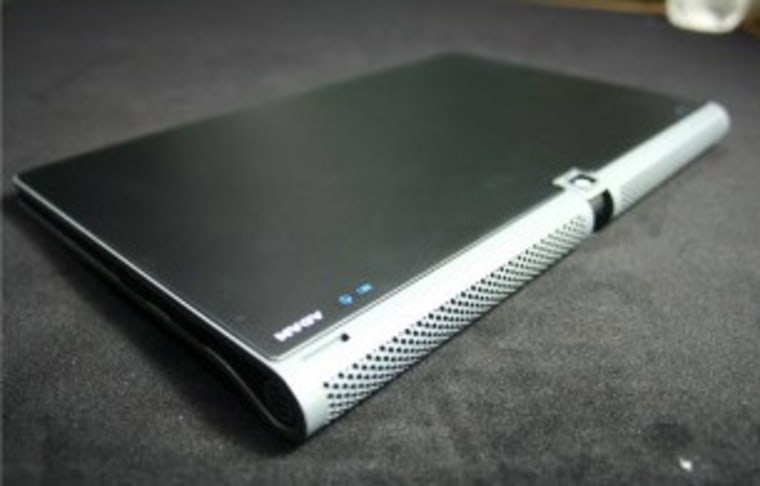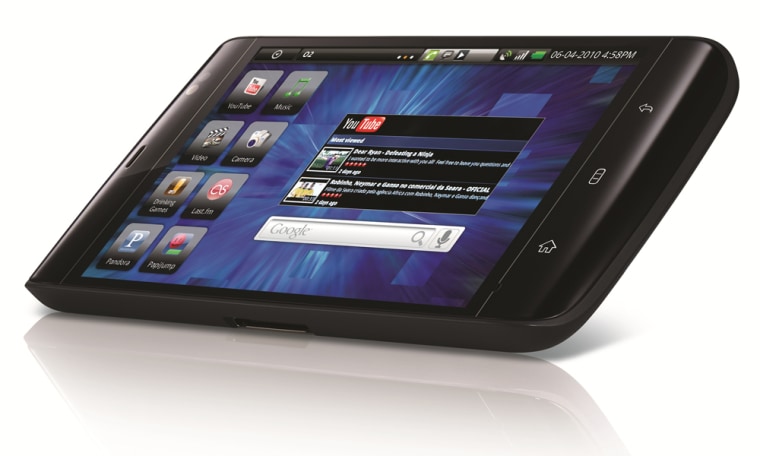If the first half of 2010 taught us two things, it's that a) touch tablets are awesome and b) people will pay for them. So why, to date, aren't the tablets based on Google's Android OS any good?
The iPad is off to a tremendous head start. There are more than 3 million — possibly 4 million — in people's hands already. But the competition, well, that is non-existent. What the Android camp needs is a thin, large-screened Wi-Fi-only tablet, priced around $400, that can go toe-to-toe with the iPad.
The half-tablet/half-phone Streak that Dell just introduced is none of these things, and if you turn over a few rocks, you'll find more Android tablets that are equally disappointing.
What's wrong with the Streak, you ask? What isn't wrong with it? With a 5-inch screen, it's hardly larger than Sprint's Evo or Verizon's Droid X phones, but both of those sell for less and are rocking the latest Android firmware, 2.2, while the Streak is stuck in the middle ages, running the year-old Android 1.6. Dell claims there will be an upgrade sometime this year.
Though there are lots of perks associated with the newer firmware, the real benefit is speed. It's way faster. Nobody wants to buy a device with last year's OS on it, even when there's a promise of an upgrade. Even the reviews on Dell.com (presumably from non-U.S. customers who had an earlier chance to buy the Streak) hint at sluggishness and battery life issues.
Worse, the Streak is being marketed like a cell phone, sold subsidized but tethered to AT&T. Last I checked, the majority of people who were renewing their contracts to AT&T were Apple-loving iPhone owners, and they weren't particularly happy about it. The choice is stark: Spend $300 up front and pay a 3G subscription fee for two years (or more), or pay $550 for one outside of a contract.
I am actually grateful that Apple sold the Wi-Fi only iPad before the 3G one. Not only did it save me $130 up front, but it saved me from buying into a monthly 3G plan that I'd use rarely or never. The only time I use the iPad outside of a (guaranteed) Wi-Fi network is in the car or on a plane, and in both instances I have enough loaded on there, between e-books, videos and games, to not need a connection.
Other contenders range from dismal to vaporous.
Among the extant shipping products are the Augen GenTouch and the Archos 7, both with 7-inch screens. Engadget's Joanna Stern said of the GenTouch, "Its 800MHz processor and 256MB of RAM makes Android smart phones like the Droid X, Incredible and Evo 4G look like Usain Bolt." The device costs $150 ... and sells at Kmart. Augen clearly hasn't heard of aiming high. (And who can trust a company that doesn't buy their own brand's dot-com domain name, when it's clearly available?)
The Archos 7 has an even feebler 600MHz processor and a resistive touch screen, which means it's inherently harder to push and less responsive than the current crop of phones from Apple, HTC and Motorola. Price tag on this? $200.

The most intriguing Android tablet yet announced is the Adam by Notion Ink. It's bigger than the others. In fact, though its screen is even larger than the iPad's by a tad, it's still about the same thickness. It does both Wi-Fi and 3G, and unlike the iPad, has slots for SD cards, HDMI cables and USB devices. It's even got a swivel camera (for shooting and video conferencing), and a high-tech indoor/outdoor screen.
Trouble is, it doesn't exist. At least, it hasn't made it past prototype form. As of this week, the company says it's in funding limbo, and won't be ready to ship anything until the end of the year (if you believe them). But hey, the nice thing is that they're promising three device configurations, according to Engadget, all priced "lower than even the ($500) basic model of iPad."
In other words, it's exactly what we want, but probably too good to be true.
There are other Android tablets on the way, most notably Samsung's Galaxy tablet, allegedly due to be revealed this September at a trade show in Germany. But traditional hardware makers tend to be lazy about innovation, and often need prodding.
When Google released the excellent Nexus One in January, it set the bar high, and suddenly, every carrier ensured that it had a 1GHz, easily upgradeable Android phone on the market. The cell phone business might be a little — or a lot — different than the tablet business, but as Android's steward, Google needs to step up again.
Show us a design, Google. Show us the heights of what can be done, before these penny-ante Android tablets irreparably sully the OS's increasingly proud name.
Catch up with Wilson on Twitter at . Bonus points if you do it from a (decent) touch tablet.
